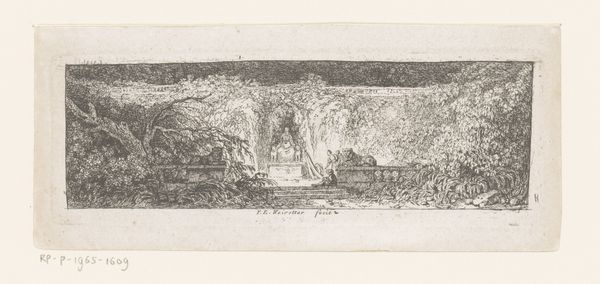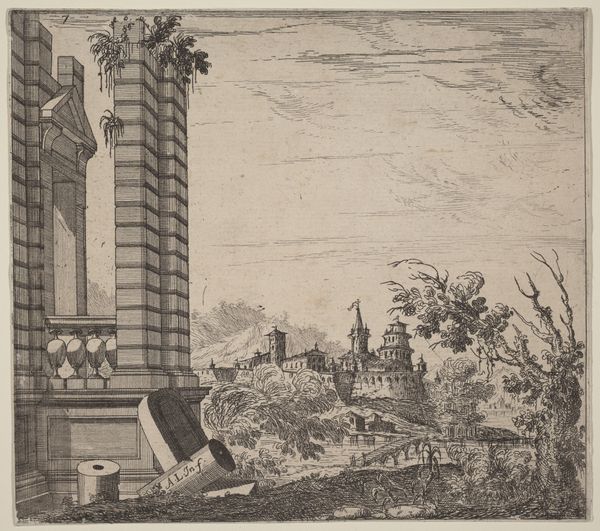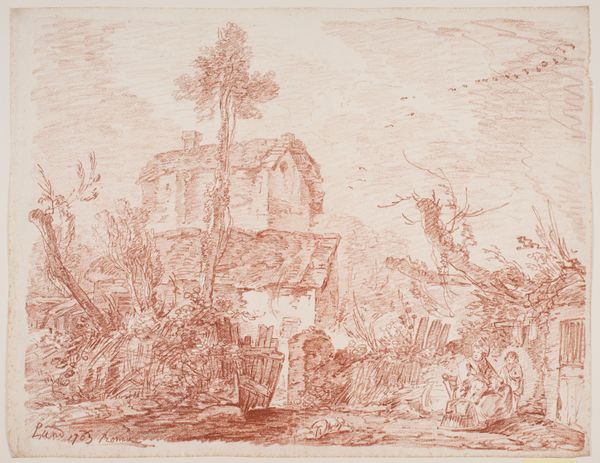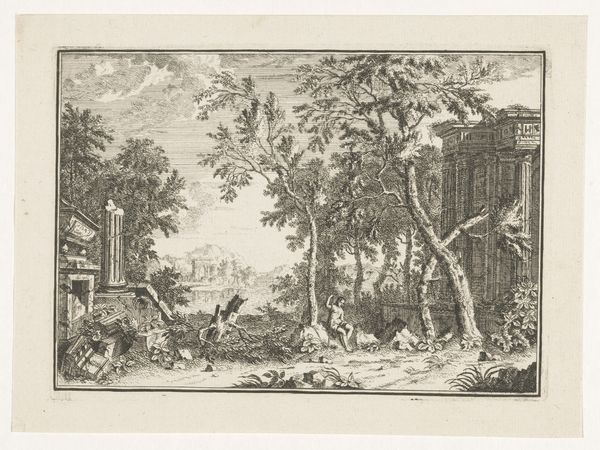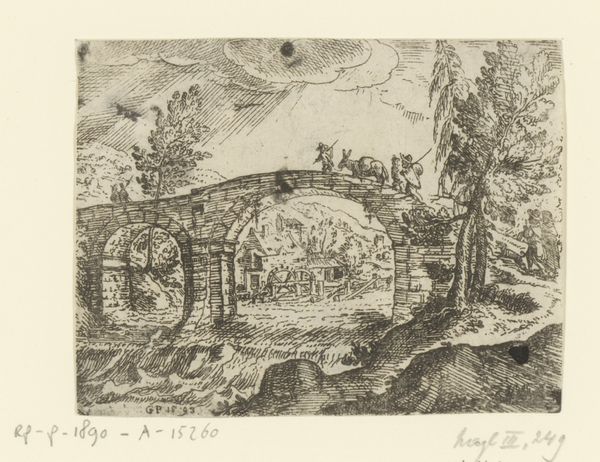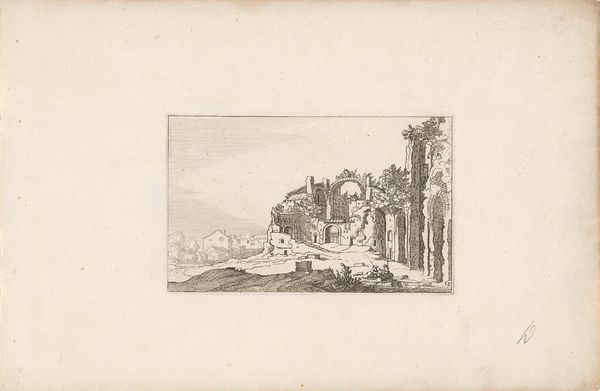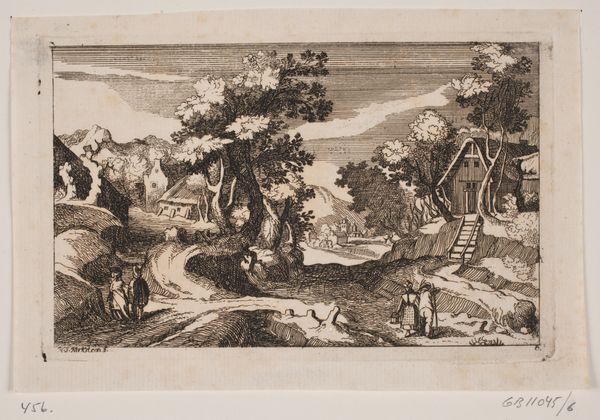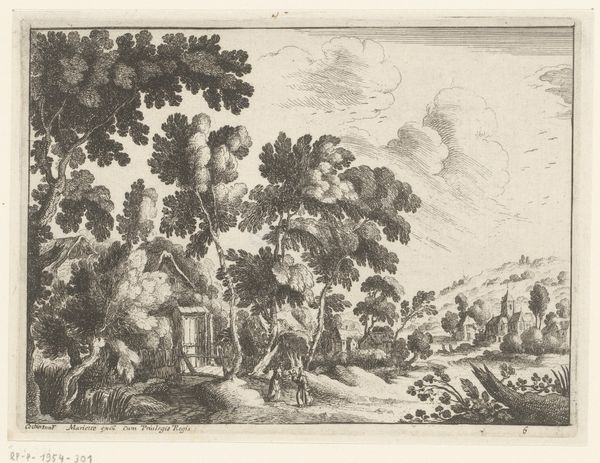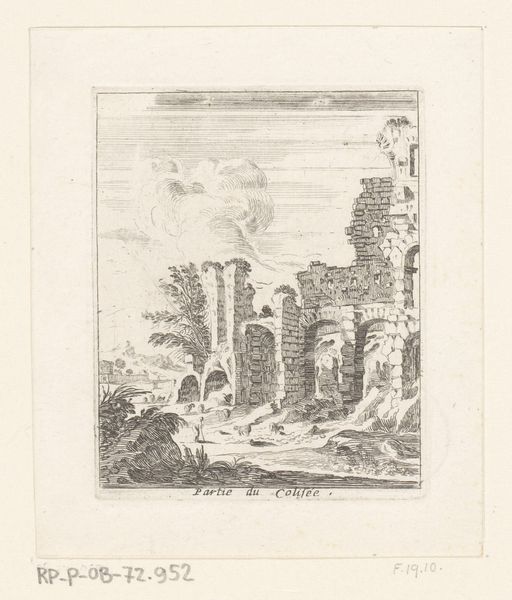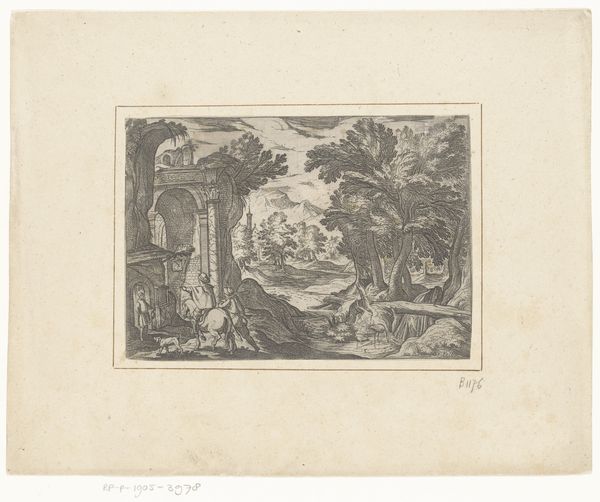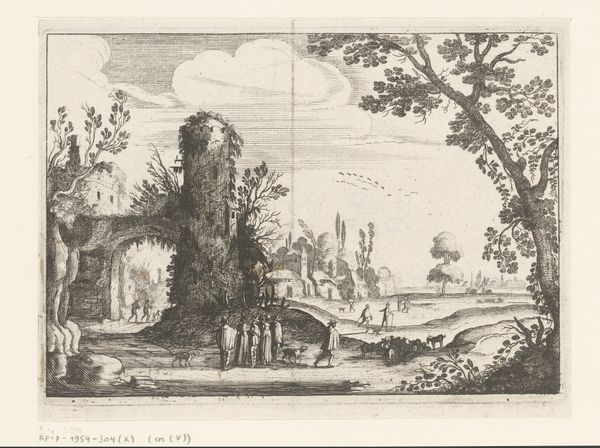
Composition with the Medici Vase, from Recueil de Compositions par Lagrenée Le Jeune (Collection of Compositions by Lagrenée the Younger) 1782
0:00
0:00
drawing, print
#
drawing
#
neoclacissism
#
allegory
# print
#
vase
#
classicism
#
france
#
academic-art
Dimensions: Sheet: 15 7/8 × 21 9/16 in. (40.4 × 54.7 cm) Plate: 8 1/2 × 11 5/16 in. (21.6 × 28.8 cm)
Copyright: Public Domain
Curator: This sepia drawing from 1782 is by Jean-Jacques Lagrenée. Titled "Composition with the Medici Vase, from Recueil de Compositions par Lagrenée Le Jeune," it presents an array of classical vessels in what seems like an idealized garden setting. What are your immediate impressions? Editor: My eye is drawn to the complex arrangement. There's a theatrical quality to it—almost as if these vessels are actors on a stage, bathed in sepia tones. It has a melancholy grandeur. Curator: I see that too. The subdued palette contributes to that somber atmosphere. Note how Lagrenée uses light and shadow to create depth. He defines each vase distinctly, showcasing the variety of forms. It’s almost a catalog of classical designs. Observe how line and hatching define the contours, achieving a precise representation of the various objects. Editor: Absolutely. The vase as object—stripped from time, and reborn as icon! What is particularly alluring to me, beyond just design elements, is the symbolic language present within this collection. Consider the Medici vase itself, acting almost as a character on center stage. It is a symbol of wealth, and power. Curator: Interesting point. The Medici vase appears frequently as a motif in French art from this era, linking the present with the perceived glory of classical antiquity. Its inclusion anchors this collection in a specific cultural discourse of Neoclassicism and academic art, echoing ideas about beauty, virtue, and reason. The composition feels calculated to evoke associations with sophistication and erudition. Editor: Yes. The crumbling stonework surrounding the collection feels particularly resonant. The broken stonework contrasts with the pristine formality of the vases, signifying a past glory gradually returning back to nature, highlighting the relentless continuity of historical memory and cultural identity. Curator: So we can regard this then, as an exercise in aesthetic formalization but one embedded with symbols. Looking closely at how line defines form gives one insight to this specific pursuit. The interplay between mass and volume and negative space also offers clues as to how a study of objects in light relates to art of its time. Editor: I agree completely. I'll leave here seeing both the vessels for themselves, but also the historical, psychological world surrounding them.
Comments
No comments
Be the first to comment and join the conversation on the ultimate creative platform.

